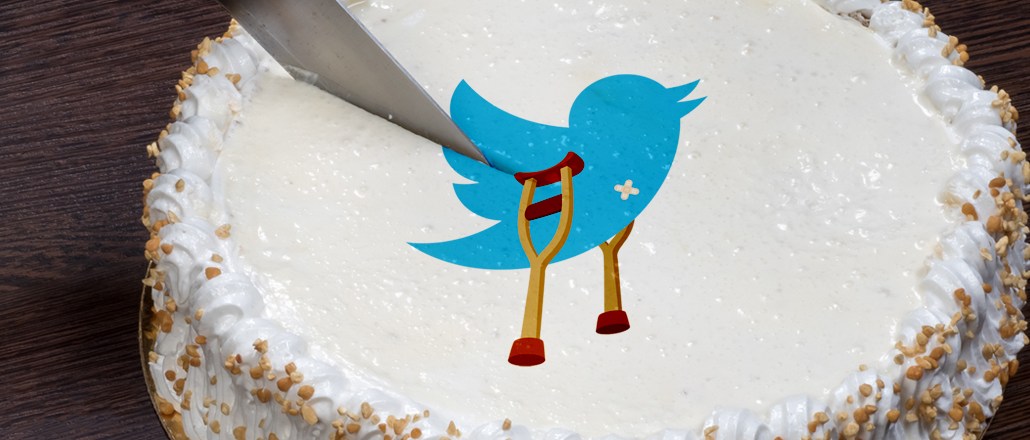
Twitter is a decade old today. And like many 10-year-olds, the platform is deep in the throes of growing pains. Twitter’s business prospects are still a source of concern for investors, and some sectors of the ad world have pulled back spending.
While Twitter’s core proposition of conversations around real-time moments remains attractive to some brands, the public company has struggled to increase its user base. Meanwhile Instagram, a younger platform, has already amassed more active users, and Snapchat has been growing at a frightening pace.
So instead of blowing out candles, Twitter today is on an all-out campaign to win over Madison Avenue, deploying its ad sales and product teams, and rearranging the platform for big moments like the Summer Olympics. But it may be too little, too late.
“We’ve seen a reallocation of a lot of budgets going into 2016 to fuel more Facebook dollars and taking away from Twitter dollars,” said one top agency executive, speaking on the condition of anonymity. “Every single marketer I’ve asked about investment this year versus last, 100 percent of them said Twitter went down.”
Indeed, one RBC Capital Markets poll this month showed 23 percent of advertisers planned to decrease their Twitter spend; 32 percent that would increase spend. An eMarketer report this week lowered its ad sales forecast for Twitter in 2016 to $2.6 billion from $2.9 billion.
“Just the stock value alone, to see that diminish so much, is frustrating to ad sales guys who put their hearts into selling products, and now they are having to pivot under new leadership,” said the agency source, who is close with Twitter salespeople.
Sales teams are now refocusing how to pitch Twitter to agencies and brands. The company is emphasizing conversation around real-time, cultural moments, whether it’s a hit TV show airing live or the Super Bowl. It launched a GIF library, introduced branded emojis, and is encouraging more use of video and imagery in the Twitter stream. It’s selling brands on the ability to target the perfect moment, as opposed to simply spamming the platform with always-tweeting strategies, according to Matt Lang, senior social strategist at digital agency RAIN.
“Twitter is kind of in the middle of redefining its core offering and experimenting where it wants to go next,” Lang said.
In order to keep dominating the live, real-time conversation around big cultural events, it launched Moments last year, which is a hub of curated trended topics, presented in a digestible visual style. But it’s had mixed results. Jill Sherman, svp of social strategy at DigitasLBi, said that Moments was exciting when it came out, but still needs refining. It amounts to little more than repackaged trending topics, instead of the best Twitter has to offer.
“As a packaged ad product, brands are interested,” Sherman said. “But once you click in, the content has to be interesting. And if brands aren’t taking advantage of richer content to create these Moments, they can easily fall flat.”
And yet, the flawed Moments product aside, it is that real-time strength that remains Twitter’s great hope. Sherman said many clients still see great results from Twitter, because it still owns relevance. “When news breaks, you know you should go to Twitter,” she said.
Indeed, some brands do report success with the platform. Steve Bender, co-founder of Greenlight Media and Marketing, worked with Intel to promote Lady Gaga’s Grammy performance last month on Twitter Moments. “A product like that is perfect to amplify a brand during a cultural moment,” Bender said.
Twitter also has a new video ad product that stays atop people’s feeds all day, meant for big launches and branding events, and it cost $500,000, according to sources.
Twitter declined to officially comment for this story. It did say the new video ads would expand to new markets soon. And despite its growing pains, there is a dedicated core on Madison Avenue who sticking with Twitter, even if it doesn’t have a billion-plus users. One agency source said that the company was a victim of unnecessarily overblown expectations.
“Twitter still has amazing data, an incredibly huge user base that most publishers would kill for and they have some compelling ad products,” the agency source said.
More in Media

No playbook, just pressure: Publishers eye the rise of agentic browsers
For the bulk of publishers, Google is, as ever, the one to watch. It’s already got agentic features within its Chrome browser, but that’s the tip of the iceberg, some say.

The biggest SEO lessons in 2025 for publishers
KPIs are changing, more AI search data is becoming available, and publishers are looking beyond search to grow their audiences and revenue.

Digiday’s comprehensive guide to what’s in and out for publishers in 2026
Adaptability stopped being a nice-to-have for publishers years ago; it became a survival skill. Here’s a look at Digiday’s guide to what’s in and out for 2026.





